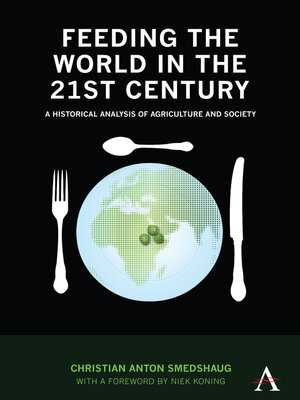Feeding the World in the 21st Century
ebook ∣ A Historical Analysis of Agriculture and Society · Anthem Other Canon Economics
By Christian Anton Smedshaug

Sign up to save your library
With an OverDrive account, you can save your favorite libraries for at-a-glance information about availability. Find out more about OverDrive accounts.
Find this title in Libby, the library reading app by OverDrive.



Search for a digital library with this title
Title found at these libraries:
| Library Name | Distance |
|---|---|
| Loading... |
Agriculture has successfully managed to increase production faster than demand for nearly one and a half centuries, and agricultural policy has developed through times of impasse during this period. This book provides and utilizes a historical understanding of the current global food situation as the basis for analyzing the ultimate challenge on how to feed an ever-expanding world of 10 billion people.
|'Feeding The World in the 21st Century: A Historical Analysis of Agriculture and Society' provides a historical understanding of agricultural development over the last two centuries. Characteristics of the period have included the opening of the prairies in the late 18th century, the invention of industrial fertilizer and the tractor's displacement of the horse. Such profound developments have led to an abundance of food and peace and prosperity within the world market. This situation began at the end of the American Civil War and continued until 2005, when prices rose in spite of increased production. Smedshaug gives a historical background of the current situation, while discussing the ultimate challenge of how to feed a world of 10 billion people. This challenge has to be met in the light of climate change, water shortage, and not least the declining availability of fossil fuel.
Smedshaug's analysis and recommendations underline the need for every country to have the freedom to establish an agricultural policy adapted to the given national natural conditions, as well as the need to put the producer at the heart of the policy in such a way that all countries can utilize their potential to produce food, and hence to feed the world.







